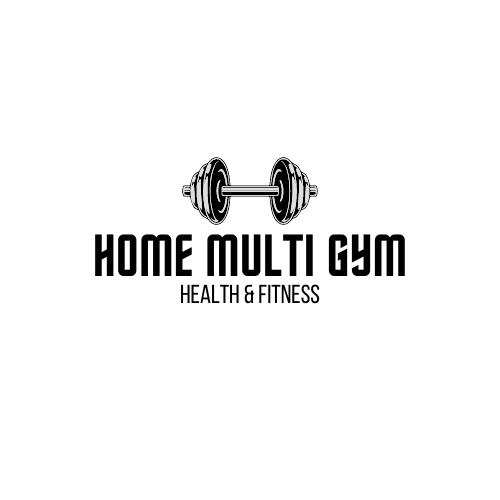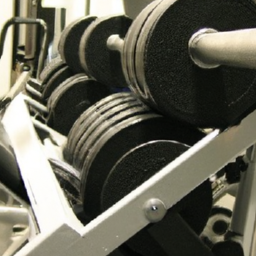Are you curious about how much noise a home multi-gym makes while you’re using it? Well, you’ve come to the right place! In this article, we’ll talk about the noise level of a home multi-gym and how it might impact your workout experience. Whether you’re a fitness fanatic or someone who prefers a quieter exercise environment, we’ll give you all the information you need to make an informed decision.
So, if you’re interested in finding out just how noisy a home multi-gym can be, stay tuned! We’ll discuss factors that contribute to the noise, such as the type of exercises you do, the machine’s construction, and the flooring in your home gym. Additionally, we’ll provide some tips and tricks to reduce the noise level and create a more pleasant workout environment. Don’t miss out on this valuable information – read on to learn more about the noise level of a home multi-gym during use!
Factors affecting noise level
When considering purchasing a home multi-gym, one important factor to evaluate is the noise level it produces during use. The noise level of a multi-gym can vary depending on several factors. Let’s explore some of the main factors that can affect the noise level of a home multi-gym.
Type of home multi-gym
Different types of home multi-gyms can produce varying levels of noise. For example, a multi-gym that uses a weight stack system may produce more noise compared to one that uses resistance bands. The mechanics of the weight stack system can create more clanking and banging sounds, especially when adjusting the weights.
Quality of materials
The quality of materials used in the construction of a home multi-gym can also impact its noise level. Cheaper multi-gyms may be constructed using lower-quality materials that are more prone to producing noise during use. On the other hand, higher-end multi-gyms often use materials that are designed to minimize noise generation.
Weight stack design
The design of the weight stack in a home multi-gym can also contribute to the noise level. Some weight stacks are designed with noise-reducing features, such as rubber-coated plates or padding. These features can help dampen the sound produced when the weights are moved or adjusted.
Bearing and pulley system
The bearing and pulley system of a home multi-gym can play a role in the noise level as well. Smooth and well-maintained bearings and pulleys can minimize friction and reduce noise. On the other hand, worn or poorly lubricated bearings and pulleys can lead to squeaking or grinding noises during use.
Noise measurements
To get a better understanding of the noise levels produced by home multi-gyms, various measurement techniques can be used. Let’s explore some of these techniques.
Decibel measurement
Decibel (dB) measurement is a commonly used method to quantify noise levels. It provides an objective measurement of the intensity of sound. By using a decibel meter, you can measure the noise level produced by a home multi-gym during different exercises and determine how loud it is.
Comparative analysis with other exercise equipment
Another way to assess the noise level of a home multi-gym is by comparing it to other exercise equipment. By using the same measurement techniques, you can measure the noise levels of different exercise equipment and determine how they differ from each other. This can give you a better idea of the noise level you can expect from a home multi-gym.
Impact of exercises on noise level
It’s important to note that the noise level of a home multi-gym can vary depending on the specific exercises being performed. Certain exercises, such as heavy compound lifts or high-impact movements, may produce more noise compared to lighter exercises or isolation movements. Therefore, it’s important to consider the specific exercises you plan to perform on the multi-gym when evaluating its noise level.
Type of noise produced
Understanding the different types of noise produced by a home multi-gym can provide further insights into its overall noise level. Let’s explore some of the common types of noise associated with home multi-gyms.
Mechanical noises
Home multi-gyms often produce mechanical noises, such as clanking, banging, or creaking sounds. These noises are typically caused by the movement of various components, such as weight plates, metal frames, or adjusting mechanisms. The severity of these mechanical noises can vary depending on the design and quality of the multi-gym.
Vibration noises
Vibration noises can also be produced by a home multi-gym, especially if it is not properly leveled or if the floor it is placed on is not sturdy. Vibrations can result in rattling or humming sounds, which can contribute to the overall noise level of the multi-gym. Ensuring proper leveling and using anti-vibration mats or pads can help reduce these types of noises.
Frictional noises
Friction between moving parts can produce squeaking or grinding noises. This can occur in areas where metal parts or cables come into contact with each other. Regular maintenance and lubrication can help minimize frictional noises and ensure smoother operation of the home multi-gym.
Noise reduction techniques
To reduce the noise level of a home multi-gym, various techniques can be employed. Let’s explore some common noise reduction techniques.
Rubberized coatings
Applying rubberized coatings to specific components of the multi-gym can help absorb vibrations and dampen noise. For example, rubber-coated weight plates or handles can reduce the impact noise generated when weights are lifted or moved.
Shock-absorbing materials
Using shock-absorbing materials, such as foam or rubber, can help absorb vibrations and reduce noise. These materials can be placed underneath the multi-gym or between parts that come into contact with each other. Shock-absorbing mats or pads can also be used to further minimize noise transmission to the floor or surrounding surfaces.
Maintenance and lubrication
Regular maintenance and lubrication of the home multi-gym can go a long way in reducing noise levels. Keeping moving parts clean and well-lubricated can help minimize friction and reduce squeaking or grinding noises. It’s important to follow the manufacturer’s guidelines for maintenance and lubrication to ensure optimal performance and noise reduction.
Isolation pads
Using isolation pads or vibration dampeners underneath the multi-gym can help isolate it from the floor. This can reduce the transmission of vibrations and minimize noise. Isolation pads are typically made of materials that absorb and dissipate vibrations, such as rubber or neoprene.
User experience
The noise level of a home multi-gym can have a significant impact on the overall user experience. Let’s explore some aspects of user experience related to noise.
Perceived loudness
Perceived loudness can vary from person to person. Some individuals may be more sensitive to noise and find even minor noises irritating, while others may be less bothered by higher noise levels. It’s important to consider your own tolerance for noise when evaluating the noise level of a multi-gym.
Disturbance to household members
Using a noisy home multi-gym can potentially disrupt other household members, especially if it is located in a shared living space or close to bedrooms. It’s important to consider the needs and preferences of other family members or housemates when choosing a home multi-gym, especially if they are sensitive to noise.
Fitness space soundproofing
If noise is a major concern, you may consider soundproofing your fitness space. This can involve adding acoustic panels or insulation to the walls, ceiling, or floor to help absorb sound and reduce noise transmission. Soundproofing measures can significantly reduce the impact of noise on the surrounding environment.
Considerations before purchase
Before making a purchase decision, there are several important considerations to keep in mind regarding the noise level of a home multi-gym.
Location within the home
The location of the multi-gym within your home can have a significant impact on the noise level experienced by you and others. Placing the multi-gym in a separate room or basement can help minimize noise transmission to other areas of the home. If this is not possible, choosing a multi-gym with noise reduction features may be preferable.
Noise tolerance levels
It’s important to consider your own noise tolerance levels when choosing a home multi-gym. If you are sensitive to noise or live in an apartment or shared living space, it may be important to prioritize a multi-gym with noise reduction features or consider alternative exercise options.
Alternate exercise options
If noise is a major concern or if you are unable to install a multi-gym with sufficient noise reduction capabilities, exploring alternative exercise options may be worthwhile. This can include using bodyweight exercises, resistance bands, or adjustable dumbbells, which generally produce less noise compared to multi-gyms.
Product reviews
When researching home multi-gyms, it can be helpful to read product reviews to get an idea of the noise levels experienced by actual users. Look for reviews that specifically mention the noise level and compare feedback across different models to get a better understanding of what to expect.
User feedback on noise level
Reading user feedback and testimonials can provide valuable insights into the noise level of different home multi-gyms. Pay attention to specific comments regarding noise and try to find reviewers with similar noise tolerance levels or living situations to your own.
Comparative analysis of popular models
Comparing noise levels across popular models can also be helpful. Look for comparisons that involve objective measurements or side-by-side tests of different multi-gyms. This can give you a better idea of the noise level variations between models and help you choose the one that best suits your needs.
Importance of noise reduction
Reducing the noise level of a home multi-gym can have several benefits. Let’s explore why noise reduction is important.
Maintaining a peaceful environment
A noisy multi-gym can disrupt the peace and tranquility of your home. By investing in a multi-gym with noise reduction features or implementing noise reduction techniques, you can create a more peaceful workout environment for yourself and others.
Avoiding disturbance to neighbors
If you live in an apartment or have neighbors in close proximity, a noisy multi-gym can potentially disturb them. Being mindful of noise levels can help maintain good relations with your neighbors and avoid complaints or conflicts.
Improving workout focus and concentration
Excessive noise can be distracting and affect your workout focus and concentration. By reducing the noise level of your home multi-gym, you can create a more conducive environment for exercise, allowing you to fully immerse yourself in your workout and achieve better results.
Conclusion
In conclusion, the noise level of a home multi-gym can vary depending on various factors such as the type of multi-gym, quality of materials, weight stack design, and bearing and pulley system. Understanding the different types of noises produced and implementing noise reduction techniques can help minimize the noise level. Considering user experience, researching product reviews, and evaluating the importance of noise reduction can also guide you in making an informed purchase decision. By choosing a home multi-gym with an appropriate noise level, you can enjoy your workouts while maintaining a peaceful environment for yourself and those around you.

